Posted on 13 June 2012 by Kelly Lawler
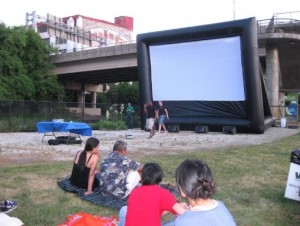 If you love movies and hate overpriced theater tickets, Schuylkill Banks has the solution. Taking advantage of the summer warmth, they are offering free movie nights under the Walnut Street Bridge (S. 25th and Walnut Streets on the East side of the river) every other Thursday this summer, beginning this week with the 2011 hit The Muppets starring Jason Segal and Amy Adams. The screenings are completely free for anyone, and if you get there early, free snacks will be available. There is also a free raffle with prizes from Philadelphia Runner before the film starts. The movies will begin at dusk (some time between 7:45 and 8:30 depending on the day), so make sure to get there before the sun goes down, especially if you’re interested in the snacks or the raffle.
If you love movies and hate overpriced theater tickets, Schuylkill Banks has the solution. Taking advantage of the summer warmth, they are offering free movie nights under the Walnut Street Bridge (S. 25th and Walnut Streets on the East side of the river) every other Thursday this summer, beginning this week with the 2011 hit The Muppets starring Jason Segal and Amy Adams. The screenings are completely free for anyone, and if you get there early, free snacks will be available. There is also a free raffle with prizes from Philadelphia Runner before the film starts. The movies will begin at dusk (some time between 7:45 and 8:30 depending on the day), so make sure to get there before the sun goes down, especially if you’re interested in the snacks or the raffle.
The films being offered this summer include this Thursday’s The Muppets, the original 1933 King Kong (6/28), and last year’s Oscar nominee Moneyball (8/23), among others shown later this summer. Check out the official site for a full list of films, and the approximate start time for each. In the event of rain make sure to check the calendar on the Schuylkill Banks homepage to see if there’s a cancellation. Rain dates are July 19 and August 30. Take advantage of this opportunity and grab your picnic blanket on Thursday and head down to the river to catch a great flick for free!
– Kelly Lawler
Posted on 12 June 2012 by WPL
Found a very friendly young male cat near Locust Walk at 40th and Walnut on Friday, June 8. If you are missing a cat please email foundcat40@hotmail.com with a detailed description or photo if you have one.
Posted on 12 June 2012 by WPL
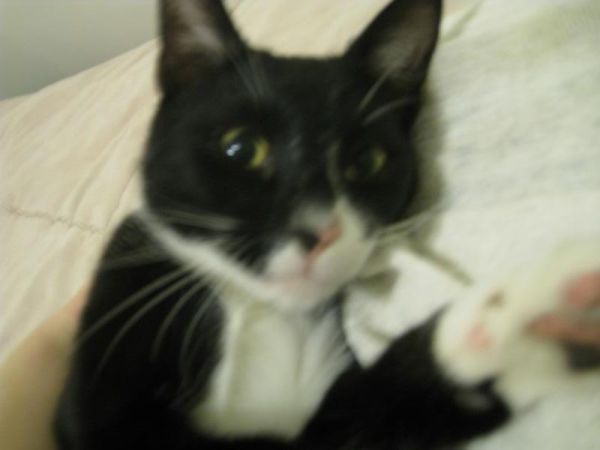
Neighbor Emily emailed us with this information:
“Found this cute little bugger wandering the streets and crying on 6/11/2012 around 52nd and Hazel. Sorry for the blurry pic, he is such a cuddlemonster he won’t stay still! Male, not neutered, probably under a year old but may just be skinny. He is a sweetie-pie and not aggressive towards other cats. I would like to find someone willing to foster him or give him a forever home. I’ll probably only be able to hold onto him for maybe a day or two before I have to take him to the SPCA (I rent and am not allowed to keep him). Please email e.j.mattes@gmail.com for more info.”
Posted on 12 June 2012 by WPL
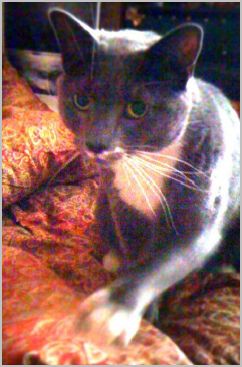
Update (6/14): The cat has been found and returned to his home.
A male grey and white cat is missing from 48th and Kingsessing. He is mostly grey with some white on his chest and paws, neutered and larger than average. He answers to Brewster. He was last seen at 46th and Regent with an injured front leg.
If you’ve seen Brewster, please call Mike at 215 758 7506.
Posted on 12 June 2012 by WPL
The Southwest Detectives Division encourage citizens to participate in their recently launched anti-burglary program Operation ID. Currently the program is piloting in West Philly (12th, 16th, 18th, and 19th Districts) and is coming soon to the entire city. The program has existed in other cities for decades. Here is the national site.
 The program participants receive specially coded labels to tag their valuable items that the police could trace back to them in case they get stolen. Police say that thieves and burglars are “less likely to steal an item that can be positively identified and that will be difficult to sell.” The labels will also aid in locating owners of the stolen or lost property and help criminal prosecution in pursuing the case through the courts. Finally, item identification should help in recovery as stolen or lost property is more likely to be returned to the owner.
The program participants receive specially coded labels to tag their valuable items that the police could trace back to them in case they get stolen. Police say that thieves and burglars are “less likely to steal an item that can be positively identified and that will be difficult to sell.” The labels will also aid in locating owners of the stolen or lost property and help criminal prosecution in pursuing the case through the courts. Finally, item identification should help in recovery as stolen or lost property is more likely to be returned to the owner.
In addition to the labels, those who participate in the program receive special window stickers (pictured) to discourage burglary at your place.
OK it’s not an armed guard at your door, but every little bit of prevention is useful.
If you are interested in applying for this program, go here for more information and to download an application form or stop by your police district. NOTE: You need to be a Pennsylvania citizen to be accepted in the program.
Here is more information on the 12th, 16th, 18th and 19th District headquarters:
12th District
65th St. and Woodland Ave.
police.co_12@phila.gov
215-686-3120
16th District
39th St and Lancaster Ave.
police.co_16@phila.gov
215-686-3160
18th District
55th St and Pine St.
police.co_18@phila.gov
215-686-3180
19th District
61st St and Thompson St.
police.co_19@phila.gov
215-686-3190
Posted on 12 June 2012 by WPL
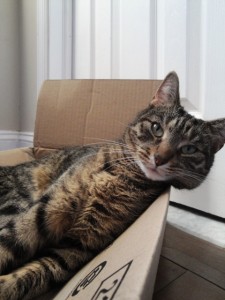
Rocco.
This week’s featured cats are Rocco and Red. They are available for adoption through City Kitties.
Rocco and Red lost their home in a foreclosure. Their mom was desperate to find them a place where they could stay together. She contacted City Kitties and these great guys moved into foster care.
Rocco is the adventurer of the pair. He likes to be the life of the party whenever you have guests and is a frequent couch companion. Rocco is not intimidated by dogs, cats or people.
Rocco’s sister Red is a bit more shy and reserved. She likes her people, but rarely comes out to play when there are guests around. She will happily sit with people and likes quiet time. Red loves catnip, but is much less competitive in her play than her brother Rocco.
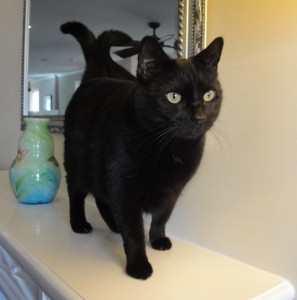
Red.
Rocco and Red are a bit of an odd couple. They will curl up on the same person, but rarely curl up with each other when there isn’t a person involved. Rocco and Red do enjoy each other’s companionship and will wrestle together with a bit of sibling rivalry.
They have been in foster care for almost six months. They are looking for home either together or separately. Rocco and Red are spayed/neutered, FIV/FeLV negative, FVRCP and rabies vaccinated, use the litterbox, and were treated for fleas and parasites as needed.
To fill out an adoption application, go here. If you have questions, please visit this page or email: arockar@gmail.com.
 If you love movies and hate overpriced theater tickets, Schuylkill Banks has the solution. Taking advantage of the summer warmth, they are offering free movie nights under the Walnut Street Bridge (S. 25th and Walnut Streets on the East side of the river) every other Thursday this summer, beginning this week with the 2011 hit The Muppets starring Jason Segal and Amy Adams. The screenings are completely free for anyone, and if you get there early, free snacks will be available. There is also a free raffle with prizes from Philadelphia Runner before the film starts. The movies will begin at dusk (some time between 7:45 and 8:30 depending on the day), so make sure to get there before the sun goes down, especially if you’re interested in the snacks or the raffle.
If you love movies and hate overpriced theater tickets, Schuylkill Banks has the solution. Taking advantage of the summer warmth, they are offering free movie nights under the Walnut Street Bridge (S. 25th and Walnut Streets on the East side of the river) every other Thursday this summer, beginning this week with the 2011 hit The Muppets starring Jason Segal and Amy Adams. The screenings are completely free for anyone, and if you get there early, free snacks will be available. There is also a free raffle with prizes from Philadelphia Runner before the film starts. The movies will begin at dusk (some time between 7:45 and 8:30 depending on the day), so make sure to get there before the sun goes down, especially if you’re interested in the snacks or the raffle.












Recent Comments